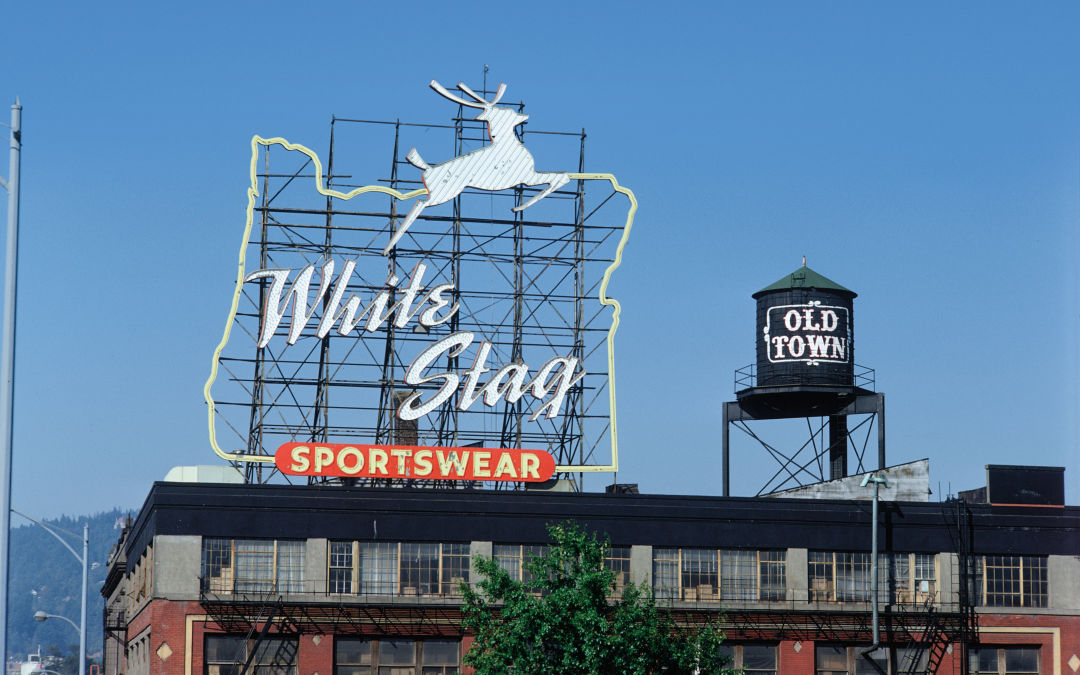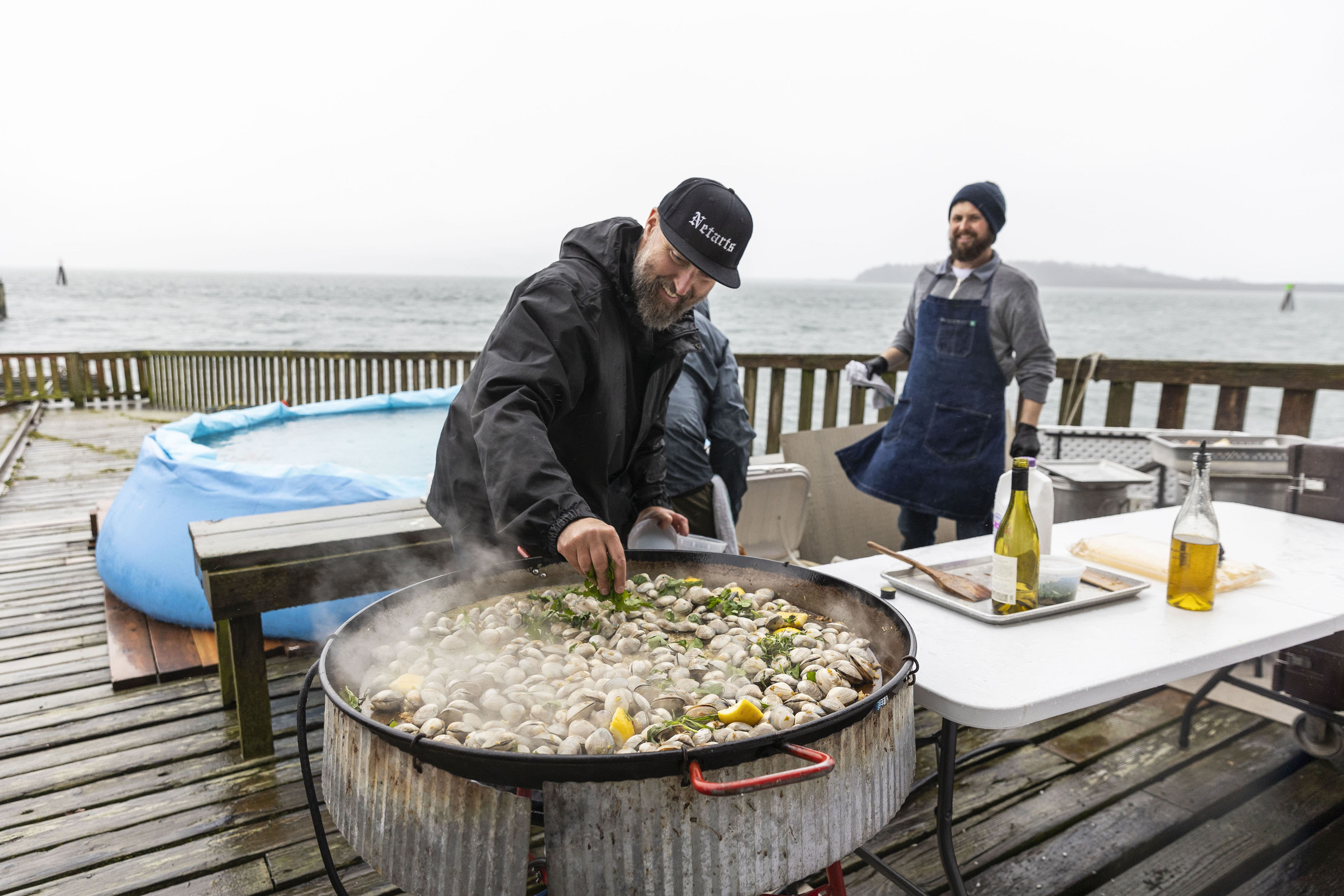White Stag Made Portland into a Sports Gear Mecca

You know the sign: the majestic leaping stag above Old Town, which since 2010 has twinkled “Portland, Oregon” in proud neon. You may not know that the stag on the top marked the beginning of the city’s booming sportswear industry.
In the early 1930s, skiing was only a niche hobby outside of New England. On Mount Hood, the activity was still in its infancy: a snow-buried cabin served as a de facto lodge, while the first ski area and ski jump opened in the 1920s at Government Camp.
An avid skier, Harold Hirsch, born in 1907, was the scion of a family-run Portland canvas apparel manufacturer called Hirsch-Weis, which stitched Northwest logging gear out of sailcloth. After graduating from Dartmouth in 1929, he took summer classes at Oxford, toying with the idea of an anthropology doctorate, until the Great Depression forced a premature return to Portland.
In the shadow of Hood, Hirsch saw opportunity. At the time, skiers who could afford them bought expensive European outfits, usually baggy woolen clothing that would be soaked through by the end of a day of skiing. With an $1,800 loan from his father, Harold founded White Stag—a loose translation of Hirsch-Weis—in an empty fourth floor of his father’s company. His mission: make clothing skiers would actually want to wear.
“He thought I was crazy,” Hirsch later said. “Dad felt that I would never make a practical businessman and that I was ... purely aesthetic and intellectual.”
But a national love affair with cars and New Deal roads—including US 26 into the Mt Hood National Forest—was feeding an outdoor recreation boom. By 1936, the number of skiers had zoomed past the million mark. In 1939, Hood became home to one of the country’s first chairlifts. By 1956, Hirsch’s plants employed 3,500 people, making White Stag the largest skiwear company in the nation, as well as one of its largest apparel companies overall. Along with Jantzen Swimwear, White Stag made Portland into a sporting goods hub, with the old White Satin Sugar sign altered to announce its presence. (Seen here in 1975, the sign would later spend about a decade advertising the Made in Oregon stores.) Hirsch first made water-resistant wool jackets, but in the late 1950s, when nylon appeared on the scene, he created more attractive, form-fitting clothing.
In 1966, Hirsch sold his company to a conglomerate called Warnaco, which eventually moved its operations out of Portland. (Some employees later found work at Columbia Sportswear, Adidas, and Nike.) Today, you can still spot the White Stag brand on women’s clothing at Walmart, which acquired the label in 2003. And, of course, if you just look up.




